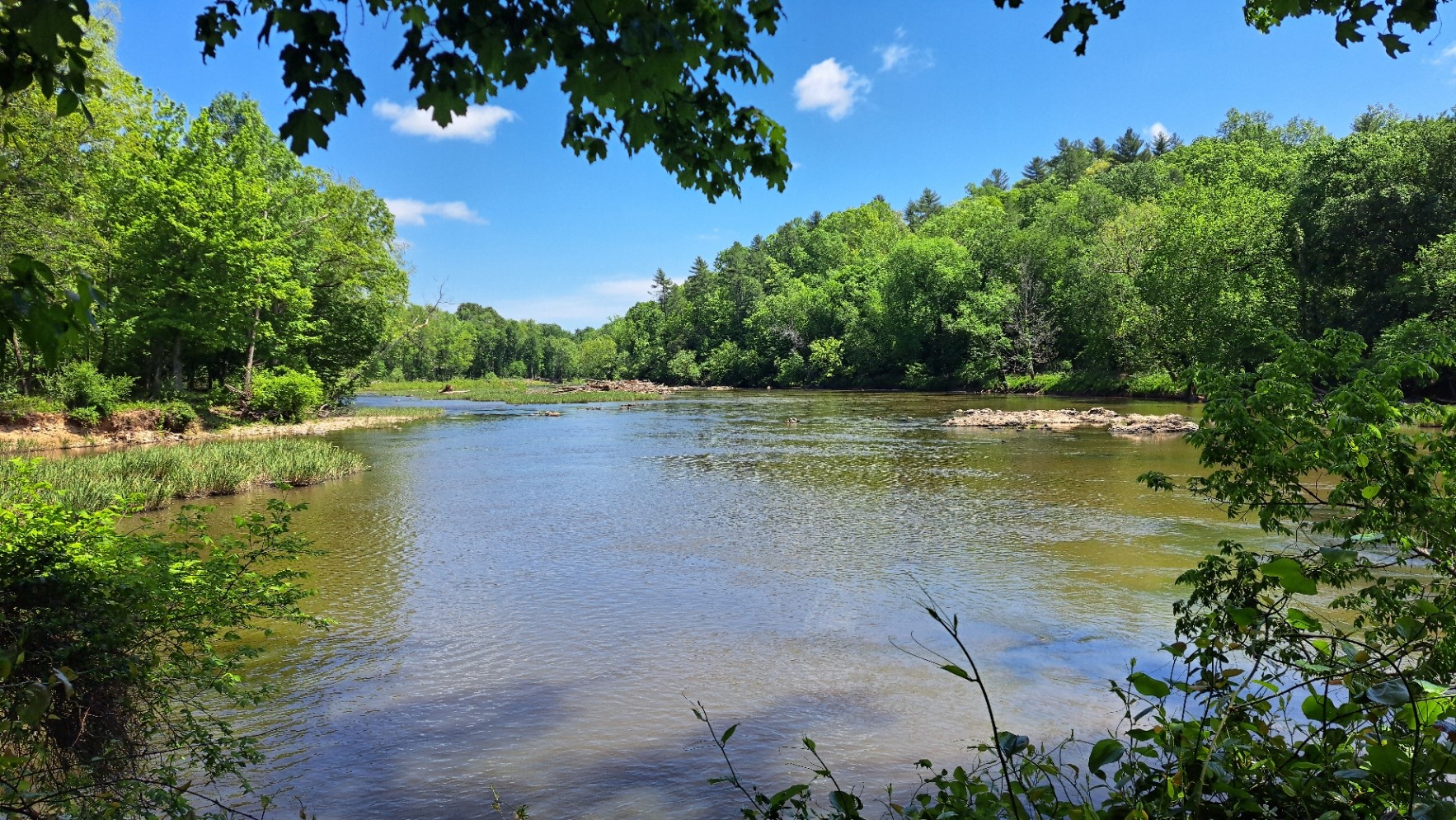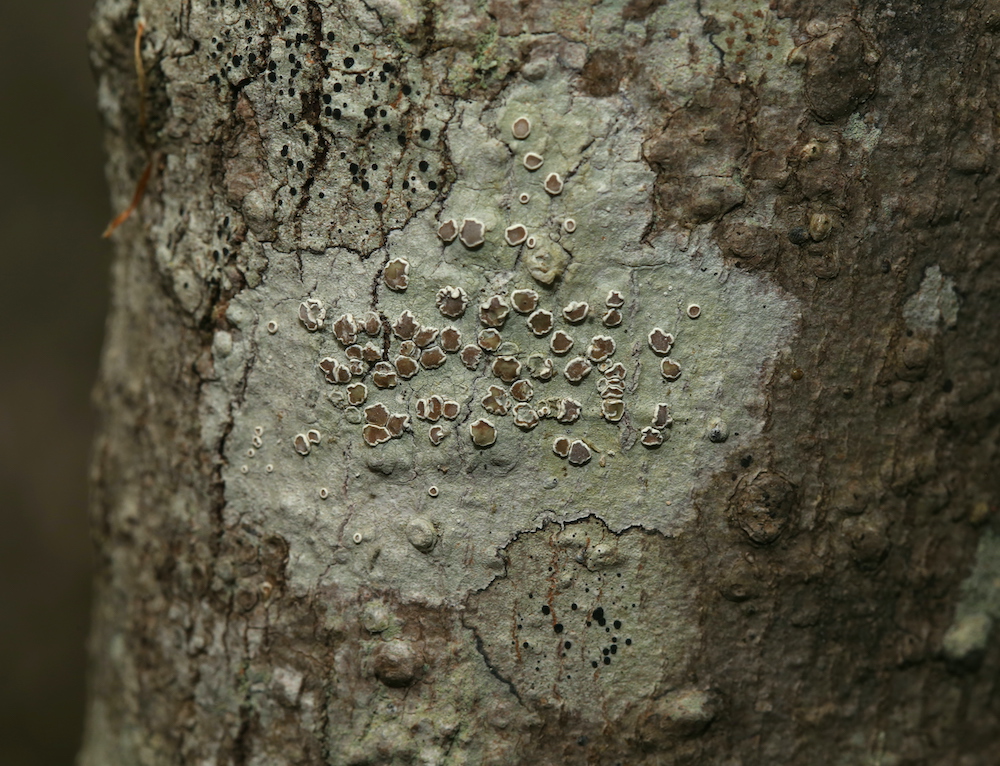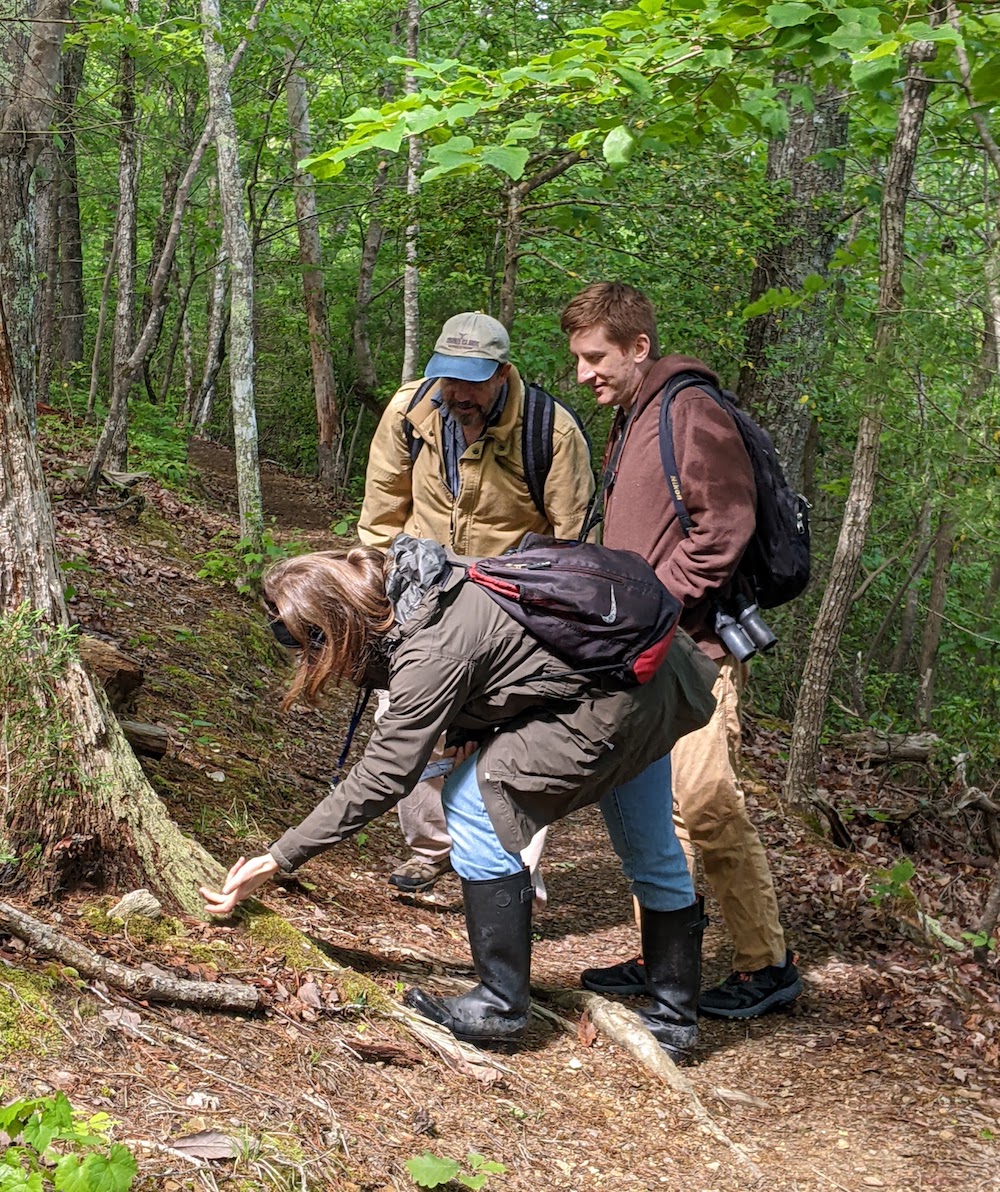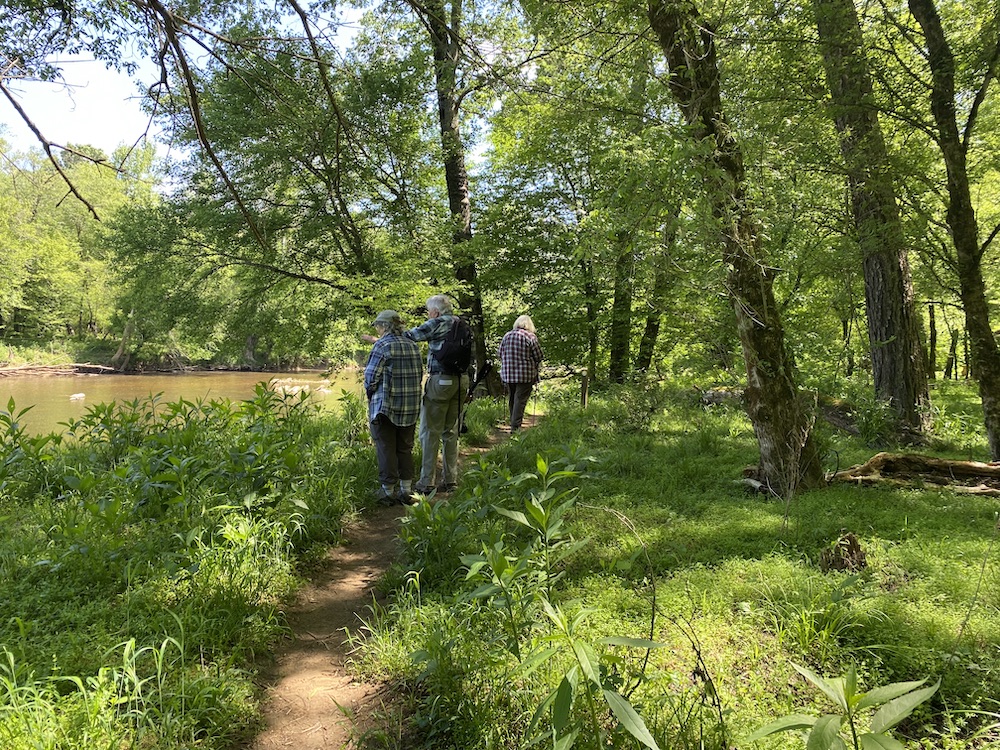White Pines Survey
Last week (April 22nd), NCBP members Blanka Aguero, Lisa Gatens, David George, Meriel Goodwin, Steve Hall, and Gary Perlmutter made a scouting trip to the beautiful White Pines Nature Preserve in Chatham County. Managed by the Triangle Land Conservancy, the preserve lies at the confluence of the Rocky River and Deep River, and its cool, north-facing slopes support White Pine (Pinus strobus), Catawba Rhododendron (Rhododendron catawbiense), the Eastern Red-backed Salamander (Plethodon cinererus), and many other species not usually found in the Piedmont. We were particularly impressed by the diversity and quality of habitats, from the mesic slopes to the rich floodplain forest.

On May 1, the NCBP is beginning a year-long biodiversity survey at White Pines Nature Preserve, in conjunction with a county-wide inventory being conducted by the NC Natural Heritage Program. While vascular plants and a few other groups have received attention in the past, much of the diversity of the preserve has not previously been documented. With the NCBP's wide range of expertise across many different taxonomic groups, we are uniquely qualified to carry out a bioblitz-style survey that includes many lesser-known groups not typically included in such work, but which we believe are of vital importance in determining habitat quality and in guiding conservation efforts.
We will be documenting the broadest possible range of the preserve’s biodiversity, with particular focus on the following groups:

- Amphibians - Steve Hall and others
- Arachnids - Brian Bockhahn
- Bees - Hannah Levenson
- Birds - Steve Hall and others
- Bryophytes - Blanka Aguero
- Butterflies - Harry LeGrand and Jeff Pippen
- Dragonflies and Damselflies - John Petranka
- Fireflies - Clyde Sorenson
- Lichens - Gary Perlmutter
- Mammals - Lisa Gatens and Ed Corey
- Moths - David George (with the assistance of Jeff Niznik and Stephen Dunn)
- Myriapods - Carol Tingley
- Orthopterans - Steve Hall
- Reptiles - Erich Hofmann
- Slime Molds - Meriel Goodwin
- Tardigrades - Paul Bartels
- Vascular Plants - Bruce Sorrie and Harry LeGrand

During our scouting trip, we enjoyed a beautiful day and a very slow walk, as we stopped and looked at almost every tree, bird, turtle, and insect, under fallen logs, on the surface of rocks, at tracks in the mud, and at every other tiny thing that usually goes unnoticed by the casual observer.
Some of the highlights included:
- Over 40 species of lichens documented by Gary Perlmutter, including several that were new to the preserve.
- A variety of Neotropical migrant birds, including a Hooded Warbler (Setophaga citrina), American Redstarts (Setophaga ruticilla), and a number of Prothonotary Warblers (Protonotaria citrea). A pair of Broad-winged Hawks (Buteo platypterus) was seen possibly courting over the steep north-facing bluff, a good habitat for this species.
- Numerous Eastern Mole tunnels and beaver scent mounds.
- A freshly emerged Periodic Cicada, the first of a vast horde.
- Turtles, including a large number of River Cooters (Pseudemys concinna), several Yellow-bellied Sliders (Trachemys scripta scripta), and one Eastern Mud Turtle (Kinosternon subrubrum).
- A few moth caterpillars, including a Southern Tussock Moth (Dasychira meridionalis), and multiple species of butterflies.

In selecting the White Pines Nature Preserve for our year-long survey, we were motivated by helping to contribute to the conservation of unique habitats and species in the face of the rapid development that is occurring in Chatham County. While the preserve itself is well protected under the management of the Triangle Land Conservancy, such natural areas are at risk of becoming islands in a sea of development. Of particular importance is the preservation of wildlife corridors, and White Pines represents a key node in a large network of movement corridors along some of the major rivers in the region.
Our members will be making regular trips to the preserve over the next year, both during the day and at night. If you see us on the trails, we would be more than happy to share what we are working on. You may also see traps, coverboards, or other equipment placed at various locations within the preserve (with TLC permission). Please do not disturb this equipment, as it will hamper our research. Please contact us if you would like to learn how you can help with our work.
Photographs by Gary Perlmutter, Meriel Goodwin, and David George.